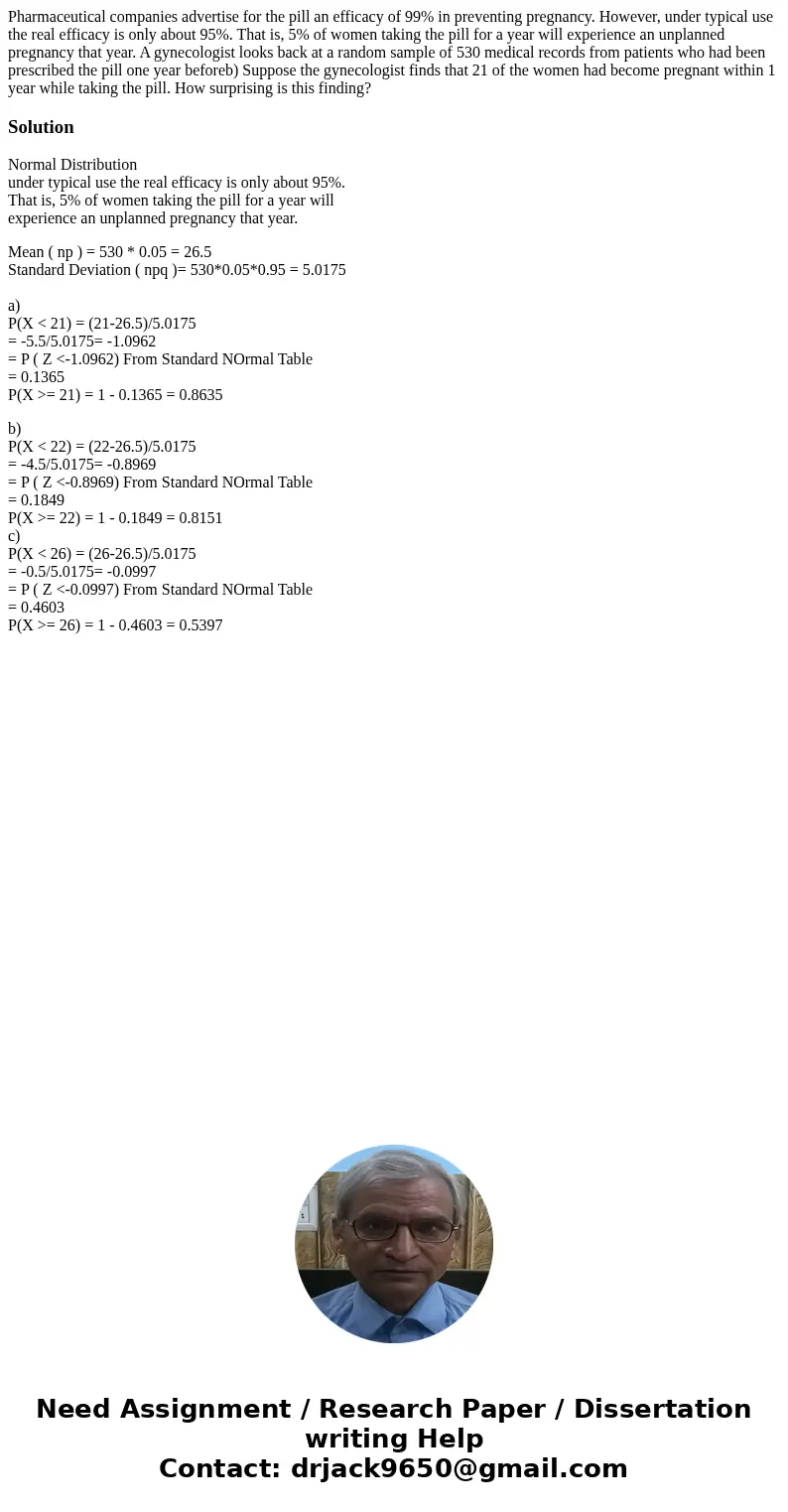Pharmaceutical companies advertise for the pill an efficacy
Pharmaceutical companies advertise for the pill an efficacy of 99% in preventing pregnancy. However, under typical use the real efficacy is only about 95%. That is, 5% of women taking the pill for a year will experience an unplanned pregnancy that year. A gynecologist looks back at a random sample of 530 medical records from patients who had been prescribed the pill one year beforeb) Suppose the gynecologist finds that 21 of the women had become pregnant within 1 year while taking the pill. How surprising is this finding?
Solution
Normal Distribution
under typical use the real efficacy is only about 95%.
That is, 5% of women taking the pill for a year will
experience an unplanned pregnancy that year.
Mean ( np ) = 530 * 0.05 = 26.5
Standard Deviation ( npq )= 530*0.05*0.95 = 5.0175
a)
P(X < 21) = (21-26.5)/5.0175
= -5.5/5.0175= -1.0962
= P ( Z <-1.0962) From Standard NOrmal Table
= 0.1365
P(X >= 21) = 1 - 0.1365 = 0.8635
b)
P(X < 22) = (22-26.5)/5.0175
= -4.5/5.0175= -0.8969
= P ( Z <-0.8969) From Standard NOrmal Table
= 0.1849
P(X >= 22) = 1 - 0.1849 = 0.8151
c)
P(X < 26) = (26-26.5)/5.0175
= -0.5/5.0175= -0.0997
= P ( Z <-0.0997) From Standard NOrmal Table
= 0.4603
P(X >= 26) = 1 - 0.4603 = 0.5397

 Homework Sourse
Homework Sourse